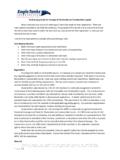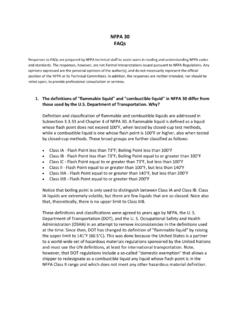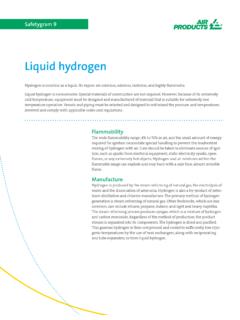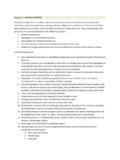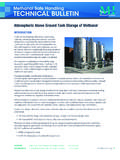Transcription of Experimental Determination of Flash Points of Flammable ...
1 943. A publication of CHEMICAL ENGINEERING TRANSACTIONS. The Italian Association VOL. 31, 2013 of Chemical Engineering Online at: Guest Editors: Eddy De Rademaeker, Bruno Fabiano, Simberto Senni Buratti Copyright 2013, AIDIC Servizi , ISBN 978-88-95608-22-8; ISSN 1974-9791. Experimental Determination of Flash Points of Flammable liquid Aqueous Solutions Agn s Jan s*, Jacques Chaineaux INERIS, Accidental Risks Division, Parc ALATA BP2, F-60550 Verneuil en Halatte, France, The Flash point is considered as a determinant parameter to classify the Flammable liquids, regarding the European CLP regulation, as well as the transport of dangerous goods regulation. In the case of some low concentrated Flammable liquid aqueous solutions, the existence of a Flash point is not very well defined, and their flammability is not precisely known.
2 The Experimental measurements of Flash Points are described in numerous national or international standards, which differ by their range of validity and by the specified Experimental conditions. The Flash point of ethanol, acetone, acetic acid and formic acid aqueous solutions was measured using Abel and Pensky-Martens in close cup methods, chosen regarding predicted values of Flash point. Results obtained show that, for the most Flammable products, such as acetone or ethanol, weakly concentrated aqueous solutions still remains Flammable . In the case of acetic or formic acid aqueous solutions, a threshold concentration can be determined under which the solutions are considered as non Flammable , regarding the European CLP regulation and the transport of dangerous goods regulation.
3 1. Principle of Flash point Determination The Flash point is defined as the lowest temperature at which a liquid generates Flammable vapours which can be ignited in air by a flame above its surface. The Flash point is determined experimentally by heating a vessel containing the tested liquid . A flame is presented at regular intervals to the liquid surface. If a Flash occurs in the vessel, it indicates that the temperature of the tested liquid has reached (or exceeded). the Flash point. The test vessel can be open or close. The Flash point is then measured respectively in "open-cup" or in "closed-cup". The Experimental Determination of Flash point is described in many national and international standards, which differ in their scope and in the specified Experimental conditions.
4 The value of the Flash point is a key parameter for the Flammable liquids classification, as defined in European CLP Regulation (EC, 2008). However, it should be noted that the Flash point is not sufficient to assess the risk associated to the use or the storage of a Flammable liquid in conditions of liquid -vapour equilibrium. Indeed, in a closed container, liquid -vapour equilibrium can be established. In this case, the atmosphere in the container consists of a homogeneous mixture of vapour and air and, if the vapour concentration is included in the flammability range, comprised between the lower flammability limit (LFL) and the upper flammability limit (UFL), an explosive atmosphere is present in the closed container. The lower point of explosion (LPE) of a liquid is defined as the temperature at which the concentration of vapours emitted by this liquid , in thermodynamic liquid -vapour equilibrium conditions and when mixing with air at atmospheric pressure, is equal to the lower flammability limit (LFL).
5 As showed on Figure 1, the lower point of explosion (LPE) is only a few K below the Flash point in the case of pure liquids. This difference may be one to three tens of K in the case of different volatilities liquid mixtures. 944. LFL and UFL evolution, as a Temperature function of temperature Vapour liquid /vapour equilibrum Flash Point LEP. liquid LFL Stoechiometry UFL Vapour concentration (vol. %). Figure 1: Graphical representation of the influence of temperature on the flammability of the vapour/air homogeneous mixture in a closed vessel containing a Flammable liquid , under atmospheric pressure (Chaineaux et al., 2009). This difference is related to the operating conditions for measuring the Flash point, whatever the standard applied. Even in the case of determinations in closed-cup, the conditions of the liquid -vapour equilibrium cannot be satisfied at the time of presentation of the flame to the liquid surface.
6 Therefore, beyond the issue of regulatory classification of Flammable liquids, to assess the risk of formation of an explosive atmosphere in a Flammable liquid closed container, it is wise to consider the lower point of explosion (LPE). If this information is not known, it is possible to rely on the Flash point, retaining a safety margin of a few K for a pure liquid , and up to 30 K for a mixture of different volatilities liquids. 2. Experimental Materials tested and methods used are described below. Methods used for Experimental measurement of Flash Points The Experimental Determination of Flash Points of Flammable liquid solutions was performed using two methods, depending on their scope: - Abel closed-cup method: EN ISO 13736 (ECS, 2008) standard, and - Pensky-Martens closed-cup method: EN ISO 2719 (ECS, 2003) standard.
7 Abel closed-cup method is applicable to combustible liquids having Flash Points between C and C, inclusive. INERIS manual Abel apparatus is presented on Figure 2. 945. Figure 2: View of INERIS manual Abel closed-cup Flash point apparatus The Experimental parameters prescribed are the following: - Heating rate of the test portion in the cup: 1 C/min, - Stirring speed: 30 r/min, in a clockwise rotation. Stirring must be continuing for the duration of the test, but not during the application of the test flame, - The test flame must be applied every C rise in temperature, - The temperature read at the time the test flame application caused a distinct Flash in the interior of the test cup must be recorded as the observed Flash point. Presumed Flash point between 30 and C: - When the temperature of the test portion reaches 35 C or at least C below the expected Flash point, the test flame must be applied for the first time, - The first flame presentation for the following tests must be performed when the temperature of the test portion reaches 35 C or C below the observed Flash point.
8 Presumed Flash point between 19 and 70 C: - When the temperature of the test portion reaches 10 C or at least C below the expected Flash point, the test flame must be applied for the first time, - The first flame presentation for the following tests must be performed when the temperature of the test portion reaches 10 C or C below the observed Flash point. Pensky-Martens closed-cup method is applicable to combustible liquids, liquids with suspended solids, liquids that tend to form a surface film under the test conditions and other liquids. It is applicable for liquids with a Flash point above 30 C. - Procedure A is used for the Determination of the Flash point of paints and varnishes that do not form a surface film, unused lubricating oils and other petroleum products not covered by Procedure B.
9 - Procedure B is used for the Determination of the Flash point of residual fuel oils, cutback bitumens, used lubricating oils, liquids that tend to form a surface film, liquids with suspensions of solids and highly viscous materials such as polymeric solutions and adhesives. INERIS manual Pensky-Martens apparatus is presented on Figure 3 below. Figure 3: View of INERIS manual Pensky-Martens closed-cup Flash point apparatus 946. The Experimental parameters prescribed are the following: - Heating rate of the test portion in the cup: up 5 to 6 C/min, - Stirring speed: up 90 to 120 r/min, in a clockwise rotation, - The temperature read at the time the test flame application caused a distinct Flash in the interior of the test cup must be recorded as the observed Flash point.
10 - When the temperature of the test portion reaches 23 C below the expected Flash point, the test flame must be applied for the first time, - The test flame must be applied every 1 C rise in temperature if the Flash point is less than or equal to 110 C and every multiples of 2 temperatures if the Flash point is greater than 110 C. Materials tested The Flammable liquids selected for these tests are listed in Table 1. It also indicates the method used for the Flash point measurement. These liquids come from chemicals suppliers. Aqueous solutions were prepared at INERIS. Table 1: List of liquids selected for the tests and method used Flammable liquid Purity Flash point measurement method used Acetone % EN ISO 13736 - Abel in closed cup Ethanol 96 % EN ISO 13736 - Abel in closed cup % EN ISO 13736 - Abel in closed cup Acetic acid 99 - 100 % EN ISO 2719 Method A - Pensky-Martens in closed cup Formic acid 99 % EN ISO 2719 Method A - Pensky-Martens in closed cup 3.










